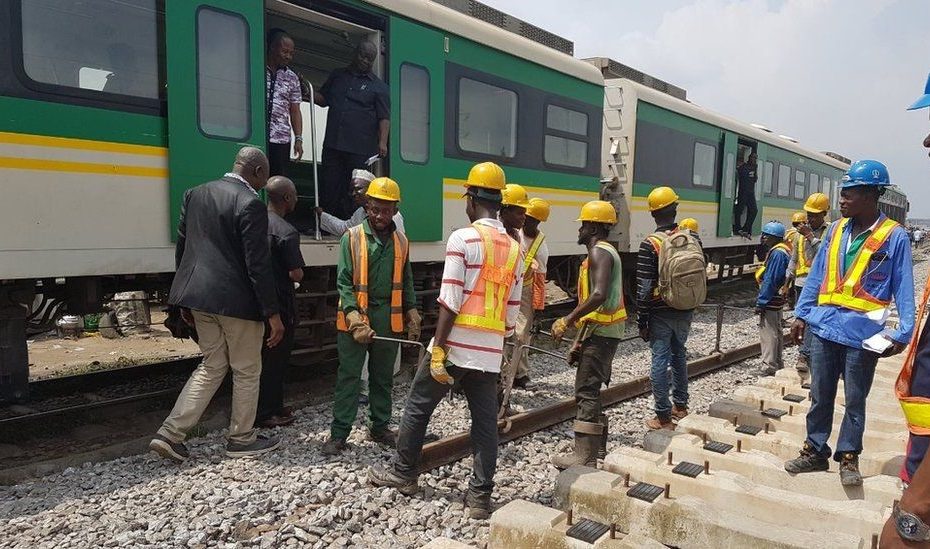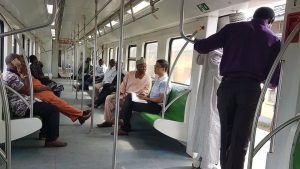BRI and Africa
Most countries in the African continent are experiencing a lack of funding to provide better infrastructure. On this occasion, infrastructure construction is a major need in Africa to fuel its comprehensive economic development. According to the African Development Bank report, infrastructure financing needs in Africa are estimated between US$130-170 billion a year. Facing that condition encourages them to gain enormous investments, including from the Government of China, under the Belt and Road Initiative (BRI).
BRI is also known as One Belt One Road (一带一路), an initiative project that consists of a Silk Road Economic Belt and the 21st Century Maritime Silk Road, launched in 2013 by Chinese President Xi Jinping. This initiative aims to build economic infrastructure to improve regional connectivity amongst countries along the Belt and Road corridors. In this regard, the African continents are a part of the 21st Century Maritime Silk Road, in which 44 African countries are participating in the Belt and Road Initiatives by signing Memorandums of Understanding, according to BRI’s official website as of May 2021. The infrastructure projects in Africa encompass roads, railways, ports, and power plants. These include a 2,600 MW hydropower scheme in Nigeria, $3 billion in telecom equipment to Ethiopia, Sudan, Ghana, and major railroad projects in Nigeria, Gabon, and Mauritania. Hence, infrastructural development has become one of the most important areas of cooperation between China and most countries in the African continents.
BRI in Nigeria
Nigeria is the most populous nation and the largest economy in the African continent. There are two major cities in Nigeria, Abuja as the capital city and Lagos as one of the largest metropolitan and most populated cities. According to World Bank, Nigeria was ranked the 26th-largest in the world by nominal GDP in 2019. Nigeria officially joined the BRI in 2018 at the 2018 Beijing Summit of the Forum on China-Africa Cooperation. BRI’s project in Africa can be traced in the areas of a large hydropower plant, a rail line, and a deep seaport.
Infrastructure investments in rail lines have become one of the most significant parts in supporting the development of Nigeria. For example, the construction of a new 2,733 km Lagos-Kano standard gauge railway was started in 2006, conducted by China Civil Engineering Construction Corporation (CCECC) as contractors and Nigerian Railway Corporation (NRC) as the main operator. This major railway is aimed to modernize the existing narrow gauge system with the wider standard gauge system by using China railway technical standards, with the total cost of the project was valued at $11.117 billion.
The project implementation is divided into several segments. The first section of the completed Lagos-Kano railway is the Abuja-Kaduna standard gauge railway, which covered 187 km with a maximum speed of 150km/h. This rail line is recognized as the first standard gauge railway modernization project in Nigeria and West Africa. The construction was started in 2011, and on July 27, 2016, marked as opening for commercial operation. The following railways’ segment is the Lagos-Ibadan double-track standard gauge railway. This year, the railway was launched in January, covering 156 km in 2 hours and 40 minutes with spent $1.5 billion. Meanwhile, other segments are in planning, waiting for the availability of the loan to construct those lines.
Significant Impacts of Railways in Local Development
The construction of rail line infrastructure in several regions of Nigeria indeed implies its local economic development. As the most populous nation and largest economy in the African continent that lacks adequate physical infrastructure in railway transportation, the train’s presence is convinced to bring positive intentions, such as it could take many passengers and goods with reasonable transport times and reduce transaction costs along with the cities. It would also improve accessibility to urban centers and connect millions of people across the region. For instance, the Abuja-Kaduna train connects passengers from Idu station, an industrial development area and commercial hub of Nigeria’s capital city of Abuja, to Rigasa Village of Igabi local area economic hub in the northwestern state Kaduna. Thereby, it is expected to open up new business activities and facilitate trade in enhancing connectivity to achieve the distribution of the economic sector in other particular areas.
Source: BBC News, 2017.
In addition, it is expected to open up new towns that will provide new settlements, education institutions, and other new basic service facilities along the rail line in order to decrease the rapid urbanization and lower the volume of high air pollution in the city center. It can be seen in Lagos as one of the world’s fastest-growing megacities, but this rapid growth has resulted in high rates of illness and death caused by unhealthy air. Therefore, the economic activities are concentrated in certain areas, but it could spread into other new places and improve the city’s air quality for better living conditions. Moreover, modernizing the railway infrastructure will stimulate the latest cities to develop their potential local tourism sector, as it enhances accessibility to the tourism destination, which in most cases has a positive impact on the local economic growth. Furthermore, it could create more jobs to reduce poverty and the highest unemployment rate in Nigeria by hiring and training in personal skills development for at least 1,000 people to work in the hub of the light rail transportation network in the Abuja Metro Station.
Other positive impacts are to decrease traffic congestion in major cities like Abuja, Lagos, and Ibadan. For example, the Lagos-Ibadan train route connects Lagos as the country’s economic hub to Ibadan as Nigeria’s third-largest city since the Lagos-Ibadan expressway is widely known for traffic gridlocks. Lastly, due to the train accidents that occurred several times in Lagos and trains from Kaduna to Abuja and road accidents caused by bad conditions on the road, it could reduce those cases resulting in more significant improvements for public safety in the transportation sector.
However, it is essential to note that some points need to be addressed in this regard. First, learning from the countries’ experiences participating in the BRI, this initiative must emphasize mutual benefit between China and Nigeria, especially in the funding mechanism. Second, a feasibility study is required to ensure that all activities and projects in the framework of the BRI must contribute to sustainable economic growth in order to meet Sustainable Development Goals (SDGs) in Nigeria. Third, all BRI’s projects in Nigeria are supposed to be in line with the national interests, which also prioritize local government cooperation by building the capacity of African local authorities to exchange knowledge, experiences, and expertise that would surely influence its regional development. Thus, the presence of BRI in Nigeria has undoubtedly been a significant opportunity to serve financially for improving insufficient transportation infrastructure, such as the regional rail network that is counted on in many African countries since it has impacted various aspects, particularly the economic growth at the domestic level.
About the writer:
Nuke Faridha Wardhani. A Master student in International Affairs and Global Governance, Zhejiang University and a Research Intern at the UCLG ASPAC Secretariat.
Reference
Albert, Eleanor. (2021, January 12). China’s Foreign Minister Revives Belt and Road on 5-Country Africa Tour, The Diplomat (online). Retrieved April 28, 2021, from https://thediplomat.com/2021/01/chinas-foreign-minister-revives-belt-and-road-on-5-country-africa-tour/
BBC News. (2017, December 7). Getting Nigeria’s railways back on track with China’s help, BBC News (online). Retrieved April 27, 2021, from https://www.bbc.com/news/world-africa-42172955
Belt and Road Portal. Profiles. Retrieved May 11, 2021, from https://eng.yidaiyilu.gov.cn/info/iList.jsp?cat_id=10076
China Daily. (2019, February 1). BRI creates new drivers for common development between China, Nigeria: Chinese ambassador, China Daily (online). Retrieved April 26, 2021, from https://www.chinadaily.com.cn/a/201902/01/WS5c53c04da3106c65c34e7c4c.html
Falaju, Joke and Benjamin Aladel. (2020, September 19). Ibadan/Kano railway to commence before December, says Amaechi, The Guardian Nigeria (online). Retrieved April 26, 2021, from https://guardian.ng/news/ibadan-kano-railway-to-commence-before-december-says-amaechi/
Huaxia. (2018, March 20). Experts urge Nigeria to explore Belt and Road Initiative opportunities, Xinhua (online). Retrieved April 28, 2021, from http://www.xinhuanet.com/english/2018-03/20/c_137053273.htm
Huaxia. (2021, February 15). Train collides with truck in Nigeria’s economic hub, no casualties reported, Xinhua (online). Retrieved May 15, 2021, from http://www.xinhuanet.com/english/africa/2021-02/15/c_139744733.htm
Ibrahim, Sheriff Ghali. (2020). NIGERIA-AFRICA IN THE BELT AND ROAD INITIATIVE: MAJOR BENEFITS, CHALLENGES AND PROSPECTS. North Asian International Research Journal of Social Science & Humanities, Vol. 6, Issue-5.
Jianing, Cao. (2018, October 8). Light rail in Nigeria’s capital opens opportunities for local people, Belt and Road Portal (online). Retrieved April 28, 2021, from https://eng.yidaiyilu.gov.cn/qwyw/rdxw/68001.htm
Junzhi, Du. (2021, January 6). China, Nigeria reach 7 consensuses on deepening bilateral cooperation: Chinese FM, Belt and Road Portal (online). Retrieved April 28, 2021, from https://eng.yidaiyilu.gov.cn/qwyw/rdxw/160459.htm
Kato, Ronald Lwere. (2020, December 9). Nigeria commences Lagos-Ibadan railway operations, Africa News (online). Retrieved April 28, 2021, from https://www.africanews.com/2020/12/09/nigeria-commences-lagos-ibadan-railway-operations/
Kemper, Karin and Shubham Chaudhuri. (2020, September 3). Air pollution: A silent killer in Lagos, World Bank Blogs (online). Retrieved May 8, 2021, from https://blogs.worldbank.org/africacan/air-pollution-silent-killer-lagos
Phiri, Mwanda and Nakubyana Mungomba. (2019). Leveraging the BRI for Africa’s Industrialisation and Intra-Trade (Opportunities for the AfCFTA). Working Paper No. 38.
Risberg, Pearl. (2019). Give and Take BRI Africa. New Perspectives in Foreign Policy Issue 17, CSIS.
Saliu, Olatunji. (2019, January 15). Nigeria’s first standard gauge railway marks 900 days of safe operation, Belt and Road Portal (online). Retrieved April 28, 2021, from https://eng.yidaiyilu.gov.cn/qwyw/rdxw/77420.htm
Simelane, Thokozani and Lavhelesani Managa (ed.). (2018). Belt and Road Initiative: Alternative Development Path for Africa. Pretoria: Africa Institute of South Africa.
World Bank. (2021, February 12). World Development Indicators database: Gross domestic product 2019, World Bank (online). Retrieved April 27, 2021, from https://databank.worldbank.org/data/download/GDP.pdf

